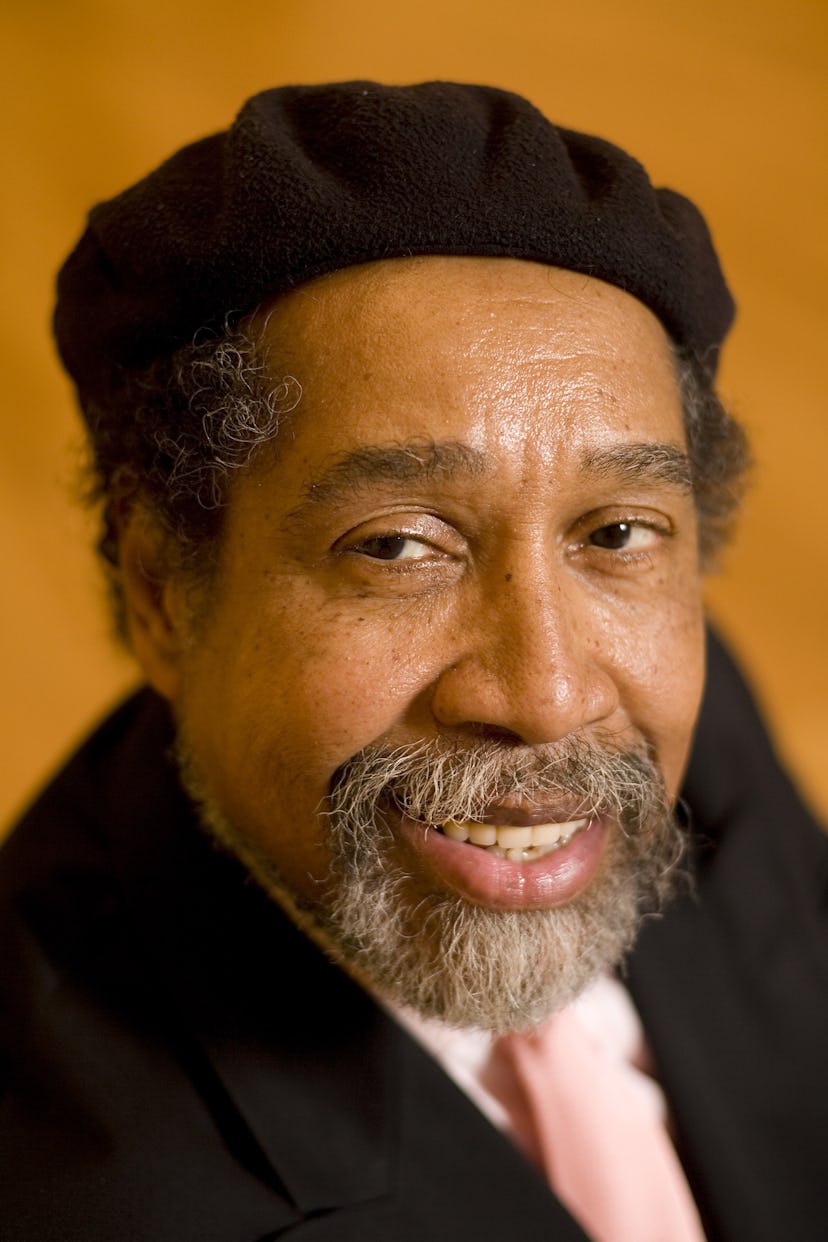The Artist Barkley L. Hendricks Has Died at 72
The American painter Barkley L. Hendricks passed away at home in New London, Connecticut, this morning. He was 72.

The highly influential American artist Barkley L. Hendricks died early this morning, in his home in New London, Connecticut. He was 72 years old. His death was confirmed by Jack Shainman, the founder of Jack Shainman Gallery in New York, who has represented Hendricks for the past five years. Hendricks is survived by his wife of 34 years, Susan.
Hendricks, who was born in Philadelphia in 1945, was known for his paintings of fabulously attired black men and women in the 1960s, ’70s, and early ’80s. His life-size portraits, whose subjects often have a strong sense of fashion and style, were also deeply interested in representations of the black body in pop culture. In a 1977 self-portrait titled Brilliantly Endowed, the artist is, save for an applejack cap and high-top sneakers, full-frontal nude—a commentary on the fantasy of the black male in the popular imagination. These depictions of the black experience combine aspects of Pop, realism, and abstraction (which ruled the era in which Hendricks came of age as an artist), and have gone on to greatly influence the likes of Kehinde Wiley and Mickalene Thomas.
“He was a true artist’s artist, always dedicated to his singular vision; he was a figurative painter when it was trendy and especially when it wasn’t,” said Jack Shainman in a statement.
Revisit the Work of the Late Barkley L. Hendricks
Barkley L. Hendricks, October’s Gone…Goodnight, 1973.
Barkley L. Hendricks,
Barkley L. Hendricks, Photo Bloke, 2016.
Barkley L. Hendricks, Icon for my Man Superman (Superman Never Saved Any Black People-Bobby Seale), 1969.
Barkley L. Hendricks, Brilliantly Endowed, 1977.
Barkley L. Hendricks, Slick (Self-Portrait), 1977.
Barkley L. Hendricks, Lawdy Mama, 1969.
Barkley L. Hendricks, Tuff Tony, 1978.
In the ’80s, Hendricks did turn his attention from portraiture to the landscapes of Jamaica for the next two decades, where he vacationed every winter with his wife. He was also a productive photographer over his career, and documented the island’s diverse environment and people.
Eventually, Hendricks, who taught at Connecticut College from 1972 to 2010, did come back to figurative painting, coinciding with its return to fashion in the art world. “Barkley L. Hendricks: Birth of the Cool,” a major, five-decade retrospective in 2008 organized by Trevor Schoonmaker, chief curator of the Nasher Museum of Art at Duke University, which traveled to museums across the country (including the Studio Museum in Harlem), renewed appreciation of his career and its impact.
“Over the past seventeen years Barkley and I have worked closely together on numerous exhibitions, talks and projects, but it is his deep friendship that I will miss the most. To be blunt, he changed the course of my life,” said Schoonmaker, who was a close friend, in a statement. “With so many artists and writers now responding to his paintings and photography, Barkley stands out as an artist well ahead of his time. Though his work has defied easy categorization and his rugged individualism kept him outside of the spotlight for too many years, his unrelenting dedication to his pioneering vision has deeply inspired younger generations … Today Barkley’s extensive body of work is as vital and vibrant as ever, and the full impact of his art and teaching is only beginning to unfold.”
This summer, Barkley’s work will be included in Soul of a Nation: Art in the Age of Black Power, at the Tate Modern in London from July 12 to October 22, 2017. His estate will continue to be represented by Jack Shainman Gallery.